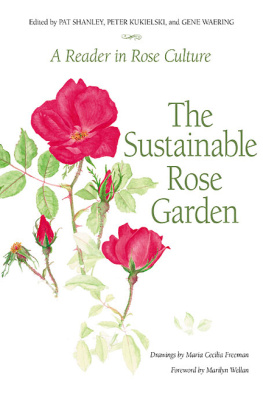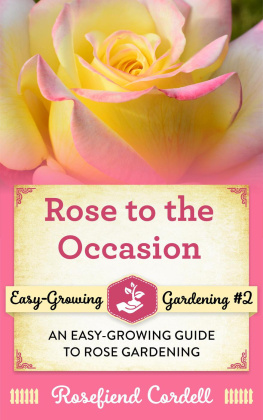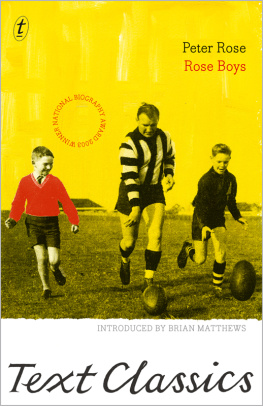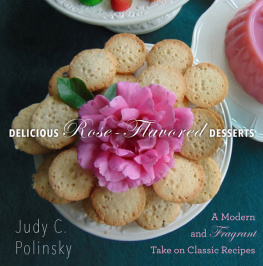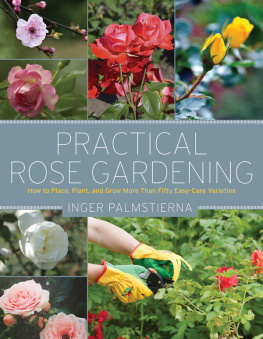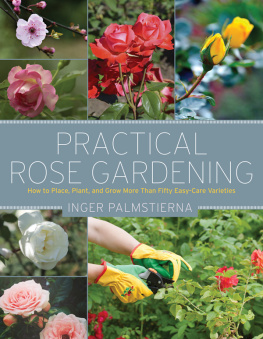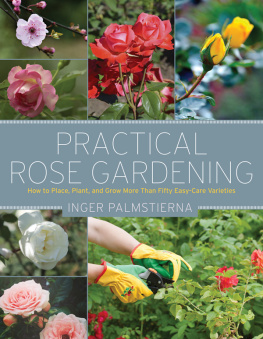

Published in the United States of America and
Great Britain in 2010 by
Newbury Books
(An imprint of Casemate Publishers)
908 Darby Road, Havertown, PA 19083
and
17 Cheap Street, Newbury, Berkshire, RG14 5DD
Copyright 2010 The Manhattan Rose Society. Individual authors retain copyright to their contributions.
ISBN 978-1-935149-16-3
Digital Edition ISBN 978-1-61200-0428
Cataloging-in-publication data is available from the Library of Congress and the British Library.
All rights reserved. No part of this book may be reproduced or transmitted in any form or by any means, electronic or mechanical including photocopying, recording or by any information storage and retrieval system, without permission from the Publisher in writing.
10 9 8 7 6 5 4 3 2 1
Printed and bound in the United States of America.
For a complete list of titles please contact:
CASEMATE PUBLISHERS (US)
Telephone (610) 853-9131, Fax (610) 853-9146
E-mail: casemate@casematepublishing.com
CASEMATE PUBLISHERS (UK)
Telephone (01635) 231091, Fax (01635) 41619
E-mail: casemate-uk@casematepublishing.co.uk
DEDICATED TO
John J. Shanley (19432009) for his unfailing support of the mission of Manhattan Rose Society and his ability to see the dream and to believe that nothing is impossiblethe impossible only takes a little longer.
Drawings by Maria Cecilia Freeman
Of all flowers methinks a rose is best.
JOHN FLETCHER (15791625)
Foreword
The 21st Century is an exciting time to grow roses. Granted, there have been other exciting eras for roses, perhaps beginning when the Chinese and Persians first brought roses in from the wild and cultivated them in their gardens. Much later, in the late 18th and early 19th centuries, the Empress Josephine made it fashionable to grow roses, and helped to encourage the breeding of new varieties under her patronage at Malmaison. Heightened interest in roses during the 19th Century resulted in increased hybridizing efforts, discoveries and beginnings, new rose introductions, and also new groups of rosesthe Hybrid Perpetuals, Noisettes, Hybrid Musks and others. The Royal National Rose Society (RNRS) of Great Britain was founded in 1876 and the American Rose Society (ARS) followed in 1892. Dean S. Reynolds Hole (18191904) began his book, A Book About Roses , with this now well-known sentiment: He who would have beautiful Roses in his garden must have beautiful Roses in his heart. He must love them well and always. Dean Hole spokeand speaksfor many!
He who would have beautiful Roses in his garden must have beautiful Roses in his heart. He must love them well and always.
FROM A BOOK ABOUT ROSES BY DEAN S. REYNOLDS HOLE

Marilyn Wellan, with Bailey.
PHOTO: MYRON WELLAN
Throughout the 20th century, the art and science of growing roses developed to magnificent proportions. Dedicated rosarians have endeavored to live by Dean Holes mandate. the rose was recognized as the national fl oral emblem in several countries including England and the United States. Roses were praised as the worlds favorite flower. the number of local ARS rose societies grew to nearly 400; the RNRS grew to over 115,000 members and it gained the patronage of Englands Royal Family. Both organizations were able to occupy new headquarters, and installed rose gardens on their properties. Botanic gardens everywhere planted important collections of roses, further encouraging more gardeners to grow roses at home. the great rose nurseries of the world thrived as rose offerings for home and public gardens became more and more colorful, exciting and plentiful. amateur rose hybridizing became a favored hobby, and great new roses came from those efforts.
As the popularity of roses grew, so did the desire by some to grow the most perfect roses they could grow. Rosarians who exhibited roses competitively did so with a natural passion for exhibition-quality blooms, and they freely shared information on the subject with new and less-experienced growers in their neighborhoods, local societies, and through published articles. Perhaps over time, the available reading material and programming taught us more than casual rose gardeners needed to know. Growing roses that might measure up to the blooms grown for exhibition appeared to be too diffi cult and costly for many. to keep these roses totally free of diseasethe bane of the average rose gardenerwas a daunting task. according to the experts, it required the use of harsh chemicals, and it took a lot of work. Many gave up the battle in favor of a garden that was easier to manage, or chose not to garden with roses at all.
I came into the hobby in the 1980s with a mighty passion for roses and for the rose society. i absorbed all i could about proper care and feeding of my roses, and became somewhat of a spokesperson for growing roses to all who would listen. I remember how eagerly I shared everything I knew about rose products and the newest varieties with a neighbor, a seasoned farmer who had long maintained and enjoyed a beautiful rose garden in front of his farmhouse without any help from me. After a time he let them go, and I still cringe with regret for perhaps depriving him of the enjoyment he found in his rose garden all those yearsand in growing them his way.
The ideathe goalof the sustainable rose garden movement is to show the way to growing beautiful roses with less pressures from disease and with less effort on the part of the grower .
Yes, collectively, we showed everyone how difficult it was to grow roses. In retrospect, I believe this may have contributed to the declining popularity of the rose and reduced membership in rose societies and revenues for rose nurseries that we have witnessed in the last several decades. Of course, this may not have totally caused the waning popularity of rose culture. Fashions come and go, if growing roses can be considered a fashion. Economies ebb and flow. Societal pressures demand lifestyle changes. All these things may have contributed.
For the past 10 or 12 years, rose organizations and the rose industry have begun to respond to the will of people who love roses and want to grow them, but without the level of care that was previously advocated. I experienced this revolution in my own garden, mainly because I wanted a beautiful garden of roses and didnt want to work as hard, and as a leader of the American Rose Society, which needed to gain and retain members more than anything else. We came to the realization that we must alter our horticultural practices for the sake of the environment and our health, and change the way we grow roses if we are to encourage others to grow them. The message needed to be and became Yes, you can grow beautiful roses. For the past decade or longer, there has been an increasing level of interest in sustainable rose gardening where the emphasis needs to bein the rose industry which is motivated by economics, and among the rose organizations of the world which are motivated by the desire to survive and thrive.
Pat Shanley, Peter Kukielski, and Gene Waering are advocates of sustainable rose gardens, and together they have put together a notable collection of articles by some of todays esteemed champions of the rose world. A number of experts and witnesses to the efforts being made in attaining the sustainable rose garden were invited to contribute. According to Gene Waering, the Reader is modeledto use a phrase from Stephen Scannielloon the rose culture writ large nature of the (highly collectible) American Rose Annuals, so ably published for the American Rose Society by its President Emeritus J. Horace McFarland (18591948) for 29 years from 1916 to 1945. The editors have achieved that goal with the varied mix of outstanding essays and articles within this publication.

